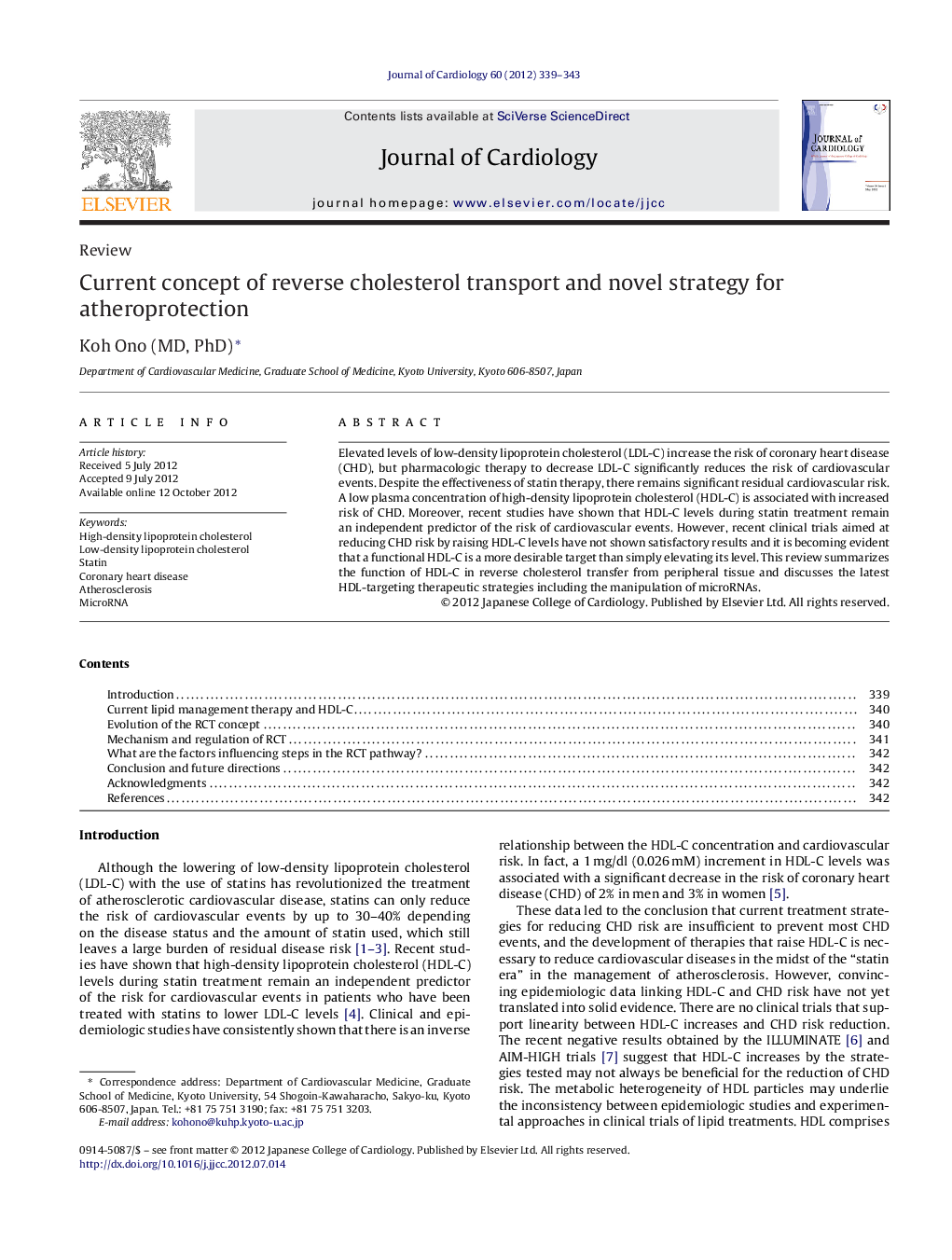| Article ID | Journal | Published Year | Pages | File Type |
|---|---|---|---|---|
| 2963180 | Journal of Cardiology | 2012 | 5 Pages |
Elevated levels of low-density lipoprotein cholesterol (LDL-C) increase the risk of coronary heart disease (CHD), but pharmacologic therapy to decrease LDL-C significantly reduces the risk of cardiovascular events. Despite the effectiveness of statin therapy, there remains significant residual cardiovascular risk. A low plasma concentration of high-density lipoprotein cholesterol (HDL-C) is associated with increased risk of CHD. Moreover, recent studies have shown that HDL-C levels during statin treatment remain an independent predictor of the risk of cardiovascular events. However, recent clinical trials aimed at reducing CHD risk by raising HDL-C levels have not shown satisfactory results and it is becoming evident that a functional HDL-C is a more desirable target than simply elevating its level. This review summarizes the function of HDL-C in reverse cholesterol transfer from peripheral tissue and discusses the latest HDL-targeting therapeutic strategies including the manipulation of microRNAs.
